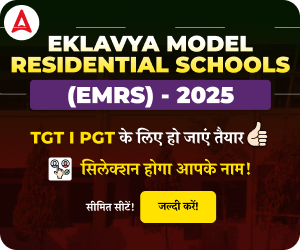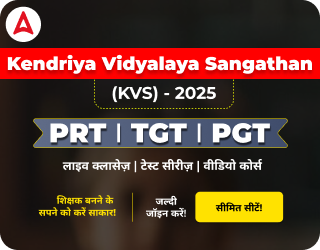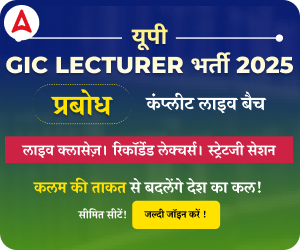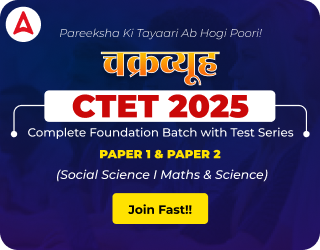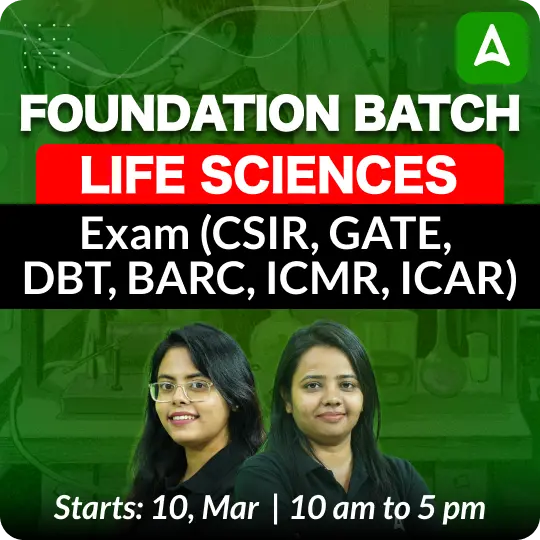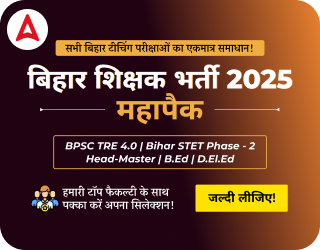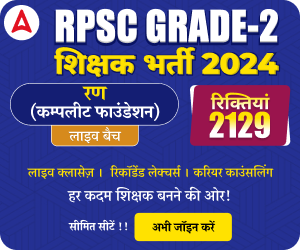Table of Contents
The Tamil Nadu State Eligibility Test (TNSET) Cut Off 2025 will be released soon by Manonmaniam Sundaranar University on its official website. As the TNSET Answer Key has been released with the response Sheet, the candidate has been awaiting the TN SET Cut Off 2025 which will be released soon along with the Result. The candidate can check the TNSET Cut Off 2025 Category-wise and Subject-wise. The TNSET Exam Cut Off Marks determine the minimum qualifying scores required to clear the exam, and they vary across categories and subjects. This article provides a comprehensive overview of the TNSET Cut Off 2025, including details about expected cut-off marks, and factors influencing the cut-off.
TN SET Cut Off 2025
The TN SET Cut Off 2025 marks will be released by Manonmaniam Sundaranar University, the exam’s organizing body. The TNSET answer key 2025 has been published on its official website. Candidates may check the basic info regarding the exam in the table.
| Aspect | Details |
|---|---|
| Exam Name | Tamil Nadu State Eligibility Test (TNSET) 2025 |
| Organizing Body | Manonmaniam Sundaranar University |
| Exam Date | 6th to 9th March 2025 |
| Exam Mode | Computer-Based Test (CBT) |
| Total Papers | Paper I (General Paper) and Paper II (Subject-Specific) |
| Qualifying Marks (General) | 40% aggregate in both papers combined |
| Qualifying Marks (Reserved Categories) | 35% aggregate in both papers combined |
| Negative Marking | No |
| TNSET 2025 Cut Off Release Date | Last week of March 2025 (along with results) |
| Official Website | msutnsset.com |
TNSET Cut Off 2025 – Overview
The TNSET Cut Off 2025 is expected to vary across different subjects based on factors such as the difficulty level of the paper, the number of candidates appearing, and the overall performance. Below is a subject-wise expected TNSET Cut Off 2025, categorized by the General, OBC, SC, ST, and PwD categories.
| S.No | Subjects | Expected Cut Off (General) | Expected Cut Off (OBC) | Expected Cut-Off (SC/ST/PwD) |
|---|---|---|---|---|
| 1 | General Paper | 46% – 51% | 41% – 46% | 36% – 41% |
| 2 | Anthropology | 45% – 50% | 40% – 45% | 35% – 40% |
| 3 | Arabic | 44% – 49% | 39% – 44% | 34% – 39% |
| 4 | Archaeology | 45% – 50% | 40% – 45% | 35% – 40% |
| 5 | Chemical Sciences | 47% – 52% | 42% – 47% | 37% – 42% |
| 6 | Commerce | 46% – 51% | 41% – 46% | 36% – 41% |
| 7 | Computer Science and Applications | 48% – 53% | 43% – 48% | 38% – 43% |
| 8 | Criminology | 44% – 49% | 39% – 44% | 34% – 39% |
| 9 | Defense and Strategic Studies | 45% – 50% | 40% – 45% | 35% – 40% |
| 10 | Earth Sciences | 46% – 51% | 41% – 46% | 36% – 41% |
| 11 | Economics | 47% – 52% | 42% – 47% | 37% – 42% |
| 12 | Education | 45% – 50% | 40% – 45% | 35% – 40% |
| 13 | Electronic Science | 47% – 52% | 42% – 47% | 37% – 42% |
| 14 | English | 48% – 53% | 43% – 48% | 38% – 43% |
| 15 | Environmental Sciences | 46% – 51% | 41% – 46% | 36% – 41% |
| 16 | Geography | 45% – 50% | 40% – 45% | 35% – 40% |
| 17 | Hindi | 44% – 49% | 39% – 44% | 34% – 39% |
| 18 | History | 46% – 51% | 41% – 46% | 36% – 41% |
| 19 | Home Science | 45% – 50% | 40% – 45% | 35% – 40% |
| 20 | Labour Welfare/ Personnel Management/ Industrial Relations/ Labour and Social Welfare/Human Resource Management | 44% – 49% | 39% – 44% | 34% – 39% |
| 21 | Law | 46% – 51% | 41% – 46% | 36% – 41% |
| 22 | Library and Information Science | 45% – 50% | 40% – 45% | 35% – 40% |
| 23 | Life Sciences | 47% – 52% | 42% – 47% | 37% – 42% |
| 24 | Malayalam | 44% – 49% | 39% – 44% | 34% – 39% |
| 25 | Management | 47% – 52% | 42% – 47% | 37% – 42% |
| 26 | Mass Communication and Journalism | 45% – 50% | 40% – 45% | 35% – 40% |
| 27 | Mathematical Sciences | 48% – 53% | 43% – 48% | 38% – 43% |
| 28 | Music | 44% – 49% | 39% – 44% | 34% – 39% |
| 29 | Performing Art | 45% – 50% | 40% – 45% | 35% – 40% |
| 30 | Philosophy | 44% – 49% | 39% – 44% | 34% – 39% |
| 31 | Physical Education | 45% – 50% | 40% – 45% | 35% – 40% |
| 32 | Physical Sciences | 47% – 52% | 42% – 47% | 37% – 42% |
| 33 | Political Sciences | 46% – 51% | 41% – 46% | 36% – 41% |
| 34 | Psychology | 45% – 50% | 40% – 45% | 35% – 40% |
| 35 | Public Administration | 46% – 51% | 41% – 46% | 36% – 41% |
| 36 | Sanskrit | 44% – 49% | 39% – 44% | 34% – 39% |
| 37 | Social Work | 45% – 50% | 40% – 45% | 35% – 40% |
| 38 | Sociology | 46% – 51% | 41% – 46% | 36% – 41% |
| 39 | Tamil | 47% – 52% | 42% – 47% | 37% – 42% |
| 40 | Telugu | 44% – 49% | 39% – 44% | 34% – 39% |
| 41 | Tourism Administration and Management | 45% – 50% | 40% – 45% | 35% – 40% |
| 42 | Urdu | 44% – 49% | 39% – 44% | 34% – 39% |
| 43 | Visual Art | 45% – 50% | 40% – 45% | 35% – 40% |
| 44 | Women Studies | 44% – 49% | 39% – 44% | 34% – 39% |
TN SET Previous Year Cut Off Marks
The Tamil Nadu State Eligibility Test (TN SET) previous year cut-off marks provide important insights into the qualifying benchmarks across various categories and subjects. These cut-offs, which vary by subject (such as Commerce, Life Sciences, or Tamil) and category (General, SC, ST, etc.), reflect the minimum scores required to qualify for Assistant Professor eligibility in Tamil Nadu universities and colleges. By analyzing past trends, aspirants can identify high-scoring subjects, understand category-wise performance thresholds, and strategize their study plans accordingly. Here we are providing the TN SET Previous Year Cut Off Marks of 2020 n below table.
| Subject | Gen | BC | BCM | NBC/DNC | SC | SCA | ST | PWD | PWD (VI) |
|---|---|---|---|---|---|---|---|---|---|
| Chemical Sciences | 144 | 132 | 128 | 134 | 126 | 132 | 122 | 128 | NA |
| Commerce | 158 | 140 | 138 | 134 | 130 | 126 | 122 | 116 | 118 |
| Computer Science and Application | 168 | 150 | 138 | 136 | 140 | 130 | 126 | 120 | 114 |
| Economics | 174 | 135 | 158 | 130 | 120 | 114 | NA | 128 | 108 |
| Education | 144 | 135 | 142 | 132 | 126 | 120 | 126 | 120 | 104 |
| Electronics | 158 | 148 | 122 | 152 | 142 | 116 | NA | 122 | NA |
| English | 168 | 148 | 146 | 136 | 134 | 126 | 118 | 120 | 126 |
| Geography | 146 | 132 | NA | 126 | 112 | NA | NA | NA | NA |
| Hindi | 180 | 124 | NA | NA | 154 | NA | NA | NA | 148 |
| History | 162 | 144 | 142 | 142 | 136 | 132 | 122 | 116 | 126 |
| Home Science | 145 | 140 | 135 | 130 | 130 | 108 | NA | NA | NA |
| Journalism and Mass Communication | 170 | 164 | 166 | 156 | 154 | 162 | NA | 132 | NA |
| Law | 178 | 153 | 168 | 149 | 144 | 138 | 132 | 158 | 134 |
| Sanskrit | 158 | NA | NA | NA | NA | NA | NA | NA | NA |
| Life Sciences | 150 | 134 | 126 | 130 | 120 | 116 | 122 | 134 | NA |
| Management | 164 | 155 | 144 | 145 | 142 | 144 | 108 | 138 | 134 |
| Mathematical Sciences | 164 | 154 | 150 | 146 | 142 | 130 | 120 | 128 | 130 |
| Tamil | 146 | 134 | 120 | 130 | 128 | 122 | 110 | 116 | 110 |
| Telugu | 190 | 178 | NA | NA | 162 | 168 | NA | NA | NA |
| Physical Sciences | 150 | 135 | 125 | 130 | 128 | 120 | 108 | 108 | NA |
| Political Sciences | 158 | 152 | NA | 144 | 132 | 120 | NA | 122 | NA |
| Psychology | 158 | 146 | 106 | 134 | 142 | 104 | NA | 108 | NA |
| Social Work | 170 | 160 | 144 | 155 | 142 | 138 | NA | NA | NA |
| Sociology | 170 | 164 | 154 | 165 | 156 | NA | NA | 134 | NA |
| Earth, Atmospheric, Ocean and Planetary Sciences | 144 | 132 | 108 | 124 | 126 | 108 | NA | 132 | NA |
| Library and Information Science | 168 | 155 | 160 | 146 | 145 | 146 | 146 | 128 | 114 |
TNSET Qualifying Marks 2025
To qualify for the TNSET 2025, candidates must secure the minimum qualifying marks as prescribed by the organizing authority. The qualifying marks are divided into two papers: Paper I: General Paper on Teaching and Research Aptitude and Paper II: A subject-specific paper. Candidates must score at least 40% aggregate marks (for the General category) and 35% aggregate marks (for reserved categories) in both papers combined to qualify.
| Category | Qualifying Marks (Aggregate in Both Papers) |
|---|---|
| General/Unreserved | 40% |
| OBC (Non-Creamy Layer) | 35% |
| SC/ST/PwD | 35% |
Factors Affecting TN SET Cut Off 2025
Several factors influence the TN SET Cut Off 2025 each year. Understanding these factors can help candidates gauge the competition and prepare accordingly:
- Number of Applicants: A higher number of applicants can lead to increased competition, potentially raising the cut-off.
- Difficulty Level of the Exam: If the exam is relatively easier, the cut-off may increase, and vice versa.
- Previous Years’ Trends: Historical data and trends play a significant role in determining the expected cut-off.
- Reservation Policies: Cut-off marks vary across categories due to reservation policies.


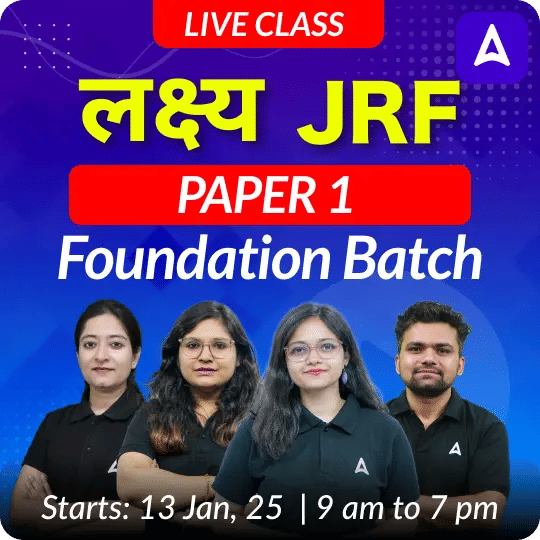

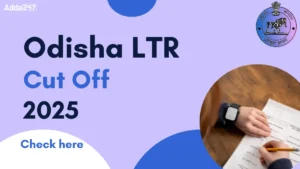 OSSC LTR Cut Off 2025, Check Cut Off Mar...
OSSC LTR Cut Off 2025, Check Cut Off Mar...
 DBT BET Cut Off 2025, Check Previous Yea...
DBT BET Cut Off 2025, Check Previous Yea...
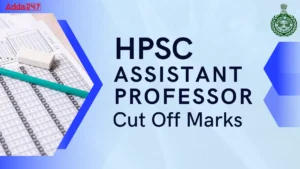 HPSC Assistant Professor Cut Off Marks, ...
HPSC Assistant Professor Cut Off Marks, ...
